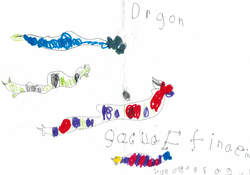Bonnie Raitt - Longing in Their Hearts
One nice aspect of my 30 Years On project restart has been the balance of gender of musicians on the #1 list. It's been pretty well even between men and women, which is a good thing. This week Bonnie Raitt claims #1 outright with Longing in Their Hearts. According to the Wikipedia page, this album was released during the height of Bonnie Raitt's commercial popularity. Bonnie Raitt is most purely a Blues artist, and this album is definitely Pop-facing Blues.
None of the songs really challenge the listener, which is one of the definitions of Pop music. This is the kind of music that can be played to any audience and that's fine. Bonnie Raitt is a very good musician and this is a well made album. Indeed, in 1995 this album was nominated for the Album of the Year (which it didn't win against fairly weak competition) but it did win the award for "Best Pop Vocal Album."
My feelings towards this album are "meh." I'm fine with it exsiting, it doesn't offend me, nor does it excite me. It's nice. Nice is good. I'll probably never listen to this album again, not because it's bad, it most definitely is not, but because it does nothing for me, really.
more ...Pantera - Far Beyond Driven
Far Beyond Driven by Pantera is a kind of surprising album to reach #1. Pantera was a Groove Metal band, which despite the name, isn't very groovy in any way you might imagine. As per the Wikipedia, Groove Metal has a slower beat than Speed or Thrash Metal, which makes it groovy. It still features heavy guitar, raspy or screaming singing, and dark themes.
I find it surprising that the album made #1 because this isn't exactly mainstream music, now or 30 years ago. For better or worse I understand Mariah Carey being #1, but Pantera? Perhaps it was just luck and no big albums were released at the same time because next week this album dropped to #9, and then #19, #22, #25, etc. The #1 ranking was just a blip.
I could only take one listen to this album. I didn't like it at all. I like various kinds of metal, but not this kind.
more ...Counting Crows - August and Everything After
Ace of Base is back at #1 so I need to go down the list to find something to review. The first album I haven't already reviewed (I won't do R. Kelly) is at #4 with August and Everything After by Counting Crows. This is the second week in a row where I review an album I genuinely like. I won't ruin things, but I've gone through the albums I'll be listening to in the near future and some weeks are going to get rough.
This album has the song "Perfect Blue Buildings" with the lyrics:
Down on Virginia and La Loma
Where I've got friends who'll care for me
Counting Crows is from Berkeley, and this refers to the intersection of Virginia Street and La Loma Avenue in Berkeley. I've spent quite a bit of time near that intersection. When I was in middle or high school (can't remember precisely when; his family moved later due to divorce) I had a good friend who lived at 2708 Virginia St and in college I had some (other) friends who lived just next door at 2704 Virginia St, both of which are at that intersection. One of those college friends tells the story of walking home one day and encountering some lost-looking young women. He asked them "perfect blue buildings?" and they said "yeah." There were no blue houses at that intersection at that time (ca. 2000), so he replied "I think it's that one over there, it's got a newer paint job."
Through all of my undergraduate years at UC Berkeley (1998-2002) I bought student tickets to the home Men's basketball games. During this time team was fairly decent. They would win at home more often than not and only reliably lost to much better teams (UCLA, Stanfurd, and Arizona were the tough opponents). The games were fun to attend. Adam Durtiz, the lead singer of Counting Crows, was a regular at the games and I often saw him in the stands and hallways. I never asked for an autograph (selfies weren't a thing yet!). The main thing I took away from seeing him is that he's a pretty big guy, taller than me and husky.
I don't think I listened to Counting Crows all that much when the album came out. I think I was into more grunge rock than alternative rock (it's a small but important distinction!). Listening to this album doesn't conjure the same memories that other albums from this time might do. I'm certain I heard "Mr. Jones" on the radio when it was popular, and probably the other singles that came off the album. However my tastes in music have broadened since I was a teenager and according to Last.fm I've listened songs on this album almost 300 times. Like any kind of music I'm not always in the mood for this album, but sometimes I am and I continue to return to it.
more ...The European Decimal Comma is Wrong
There are many things we Americans do badly. We won't give ourselves a health care system that makes sense. We die on our roads more than other advanced countries. We kill ourselves and others with guns way more than any other country. We stubbornly stick to Imperial units when Metric units and its powers of ten make much more sense.
There are a few things we do better, however. American National Parks are far beyond anything any other country has. The Americans with Disabilities Act is superlative when compared to the feeble efforts of even the most advanced European countries. Our popular culture, for better or worse, is able to make it to even the most remote corners of the world.
I want to highlight one thing that many Europeans do that is
absolutely, 100% wrong, that Americans do right (or at least not incorrectly,
as I'll explain below).
In Europe, the number 12345/10 is written
1.234,5
while here in the land of freedom, we write it
1,234.5
Europeans are wrong because they are inconsistent. Like most of the world, they use a period "." to indicate the end of a sentence and a comma "," mid-sentence for phrasing. Periods are used between sentences to separate ideas, concepts, and thoughts. If we compare this to numbers, there's a big jump in concept from whole, countable integers, to less-than-one decimal numbers. Children learn whole numbers many years before learning decimals, and the whole time they're also learning to read. Learning that periods between sentences indicate a jump to a new thought or concept. Like sentences, Americans use periods to separate big ideas in numbers, specifically between integers and decimals. And this is why the European comma is wrong, and Americans are not wrong. Americans use a comma in a number to indicate groups of thousands (phrasing) and periods to indicate decimal numbers (new concept), which is consistent with how sentences are written.
There's really no defense to the European decimal comma, and frankly their refusal to fix it is just as bad as the many (many!) things Americans do wrongly.
more ...Soundgarden - Superunknown
For the first time since I restarted 30 Years On there is a #1 (*) album I have actually listened to multiple times, willingly. Superunknown by Soundgarden is one of the smash hit albums that makes up the Grunge wave that came out of Seattle in the early to mid-1990s. Since I started tracking my music plays, I have listened to some Soundgarden every year for the last 17 years (although 2015 was thin for some reason). As of this writing I have over 500 plays of Soundgarden.
I like to discover new music, and I'm still finding new artists to listen to. Last week a new album by Waxahatchee called Tigers Blood was released and it's great. But there's always going to be a place for the music I listened to as a teenager. A fair number of songs from this album still get steady radio airplay: Black Hole Sun, Fell on Black Days, and Spoonman. The whole album remains worth listening to by me, and by you, forever.
If you go to the Grunge link at Wikipedia, the second paragraph mentions a list of popular Grunge bands and their breakout hit albums: Nevermind by Nirvana, Ten by Pearl Jam, Dirt by Alice in Chains, Core by Stone Temple Pilots, and Superunknown. The (original) lead singers of these bands, except for Pearl Jam, all died untimely early deaths due to drugs or suicide. I guess that says something about Grunge musicians. Oh well, I can enjoy the music without succumbing to the same fate.
(*) The #2 album this week is The Downward Spiral. This was a good week for music 30 years ago!
more ...Toni Braxton - Toni Braxton
A different #1 album has topped the charts: Toni Braxton by (betcha can't guess) Toni Braxton. Interestingly, it was released 8 months "ago" on July 13, 1993; apparently it experienced a bounce in sales to bring it back to the top "now."
This album is very 90s R&B. It is very tightly produced by Babyface and Toni Braxton is an excellent singer. The songs are all as you would expect, about love and relationships.
Listening through the album I don't feel like any particular song stands out, which is both a good and bad thing. If you're in the mood for some 90s R&B, this delivers. It's 53 minutes and 29 seconds of smooth beats and harmonies which sometimes is exactly what is wanted. Let's just say it's not the kind of music that puts you in the mood to do a workout or spring clean the house.
I must have heard some of these songs on the radio 30 years ago because this album did very well, but honestly I can't remember. None of them seem familiar, in particular, but they all seem familiar. I'm more confident that I've not heard them at all within the last decade or more.
I am not often in the mood for 90s R&B and, while this album is not bad, per se, it's not really something I reach for often, or, ever. Ok, sometimes I need a dose of End of the Road, but only sometimes.
more ...Kid Arts
Here's a bunch of various kid art for March 2024. I have no idea how old some of it is. Enjoy!



















 more ...
more ...
Ace of Base - The Sign
Music Box is still the #1 album, but the #2 album is by R. Kelly, someone I'm going to stay away from, so we'll slide down to the #3 album, The Sign by the Swedish band Ace of Base. According to my last.fm scrobbling history, before today I had listened to Ace of Base exactly two times, probably as part of an algorithmic mix on a streaming service. I definitely remember hearing a few of these songs on the radio when this album came out and was popular, but I can't say I could remember the last time I heard it on the radio. Clearly, they're not my favorite band.
But luckily for them, my tastes, and perhaps American radio, the world has different tastes and they are the third most popular Swedish band in history, and have sold many millions of records. Don't worry about them.
Ace of Base is basically pure pop music, which isn't a bad thing. Their music is entertaining and enjoyable in the way pop music should be. It's obviously very synthesized, the horns in the beginning of "All That She Wants" are unambiguously fake. But that's the appeal of pop, right? Music that's tight, clean, and keeps the surprises to a minimum. Pop should be very danceable. The biggest hit off the record (in the United States), the eponymous "The Sign" fits this bill with a catchy driving beat. Many of the songs on this album were on their first album "Happy Nation" which did not make an impression in the US. This includes the title track of that album "Happy Nation" that didn't chart at all in the US. Curiously, "Happy Nation" appears to have a recent (relative) surge in plays according to last.fm, but the other songs off this album remain more popular overall.
My summary is that this music is not my favorite, but it's not bad. Now that I've been reminded of it, maybe when I'm in the mood for some pop, I'll think of them. We'll see!
more ...Finale for last.fm
Since 2006 I've engaged in a bit of navel-gazing and tracked my music listening using last.fm. By running an application on your computer or phone, or linking a streaming service to last.fm (e.g. Tidal and Spotify support this), the service keeps track of what songs you listen to. The act of recording a song listen is called a "scrobble." However, it's always kind of bugged me that you can't scrobble in all situations, like when listening to an internet radio station or terrestrial radio.

Recently I discovered the Finale app that does exactly this: it not only allows you to manually enter songs, it includes Shazam-like ability to listen to songs and identify them for you, and if you like, then scrobble the song. It has a "continuously listen" mode which despite the name means that once a minute it wakes up and listens for any new song you're listening to and scrobbles for you.
Somewhat related, I would like to recommend The Colorado Sound, a music radio station operated by a local NPR affiliate. It's as commercial-free as NPR is (limited to "supported by" messages) and has a very wide and eclectic selection of music. Using the Finale app while I listen to their internet stream allows me to keep track of what they're playing, and if I hear something I like, I can revisit that song/artist. You should check it out!
more ...Mariah Carey - Music Box
Now that I've got my blog running again, I've decided restart my project of reviewing the top-selling album from 30 years ago. For the uninitiated, I listen to the top-selling album from 30 years ago one or more times and then write a review of it here. I'll try to do it weekly, but no promises.
I first started this over 13 years ago, and at that time 30 years ago was before I was into popular music. 30 years ago now in 2024 represents peak teenaged years for me. I was 14 and in 8th grade. Middle school is definitely peak teenage years and I definitely paid attention to popular music when I was 14. I think, therefore, I'll enjoy doing these reviews now more than I did before. There will be the stinkers and ones that I just don't like, of course, but there will be ones that bring me back to my youth.
Just like the first album I reviewed, this restart is a rough one in the form of Music Box by Mariah Carey.
Mariah Carey is not my first, second, nor third choice of music to listen to. It's not offensive nor grating, but it doesn't do much for me. About the only time I hear her music is when I'm listening to a Christmas music mix.
There are a few hit singles on this album, like Dreamlover and her cover of Without You. Unlike many songs, the original version of "Without You" isn't the best known or even the best version. The Harry Nilsson version is better than Mariah Carey's and the original. Apparently this album is important enough to warrant a 30th Anniversary Edition which I'm not going to listen to.
In summary, I will probably never listen to this album again.
By the way, I'm using this listing of top album sales. The quickest way to explore that list is just to change the date (YYYY-MM-DD) in the URL. It's likely that in about 15-20 years or so this listing will be completely messed up by digital music streaming, but I'll cross that bridge when (if!) I get there.
more ...Solar Water Monitoring Page

Today I just published a page that monitors my solar water heater. Every fifteen minutes the Raspberry Pi that controls the system pushes updated metrics to this website and triggers a refresh of the plots on the page. There's a diagram and description of how the whole system works. Go ahead and check it out!
more ...Resuscitating the Blog
When I started this blog I used Wordpress. Wordpress is web-based content management system that uses PHP and one of MySQL or MariaDB to store the post data. I used Wordpress for years moving between a few different hosts finally settling on Linode.
Wordpress is a great product and has a healthy, vibrant user community. There are thousands of plugins and themes. There's phone apps for making blog posts on-the-go. However, being a dynamic web tool it is vulnerable to security issues. It is a constant game of whack-a-mole keeping things updated. Plugins add new bugs, and sometimes plugins are written with purposeful backdoors.
Over three years ago I decided to move away from Wordpress to something non-dynamic. Something with fewer vulnerabilities. I initially tried Hugo and found a tool that exports posts from Wordpress to Hugo. However, I found I didn't really like Hugo, and I just kinda... didn't do anything about it for a long time. Years a long time.
A few weeks ago I decided to revisit things. I found Pelican, a Python-based static website builder.
It is very similar to Hugo in form and function, but being written in Python it jibes with my knowledge
and skills much better than Hugo.
Posts and pages are written in reStructuredText or Markdown, or even
HTML. I mostly use Markdown,
and in a few cases, HTML is the correct choice (e.g. photo galleries).
Each document has fields of metadata that Pelican parses to build out a full static website.
There are a number of themes and I'm presently using the bootcamp2 theme.
Pelican also has dozens of plugins that add
plenty of capabilities but zero vulnerabilities.
It took a few weeks to slowly fix up all the posts that previously had been exported from Wordpress into Hugo-flavored Markdown into something Pelican could read. I uploaded a fair number of videos to YouTube, and had to adjust various other media here and there.
At the same time I'm moving my website to a new Linode server. This new server will not run any PHP or other dynamic web content which should keep things much simpler.
I'm going to try to post here more often and more consistently. Let's see if I succeed!
more ...

























